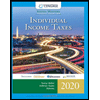
(1)
Pension plan: This is the plan devised by corporations to pay the employees an income after their retirement, in the form of pension.
Defined contribution pension plans: In such plans, employers contribute fixed amounts annually, to the pension fund. The benefit amounts are based on size of pension fund available at the time of retirement. There is no commitment on the part of the employers to pay fixed retirement benefits.
Facts of the case: In an audit survey by an auditor, it is observed that the employee contributions towards the defined contribution pension plans are not reported on the mutual funds statement until the completion of two months, after which the deductions are made. But $500,000 of contributions are deducted from the employee pay checks every month. When the plan was initially begun, contributions were reported immediately invested.
To discuss: The motivation behind the change in reporting the timing of investments
(2)
To discuss: The ethical dilemma for change in in reporting the timing of investments
Want to see the full answer?
Check out a sample textbook solution
Chapter 17 Solutions
INTERMEDIATE ACCOUNTING LL W/ ACCESS 540
- Financial Accountingarrow_forwardTwo investors are evaluating Anywhere e-SIM Ltd.’s stock for possiblepurchase. They agree on the expected value of D1 and also on theexpected future dividend growth rate. Further, they agree on theriskiness of the stock. However, one investor normally holds stocksfor 2 years, while the other normally holds stocks for 10 years.Is it true that they should both be willing to pay the same price forthis stock? Explain based on how stocks are valued and provide anumerical example to support your arguments.arrow_forwardPlease need answer the accounting questionarrow_forward
 Individual Income TaxesAccountingISBN:9780357109731Author:HoffmanPublisher:CENGAGE LEARNING - CONSIGNMENTPrinciples of Accounting Volume 1AccountingISBN:9781947172685Author:OpenStaxPublisher:OpenStax College
Individual Income TaxesAccountingISBN:9780357109731Author:HoffmanPublisher:CENGAGE LEARNING - CONSIGNMENTPrinciples of Accounting Volume 1AccountingISBN:9781947172685Author:OpenStaxPublisher:OpenStax College



